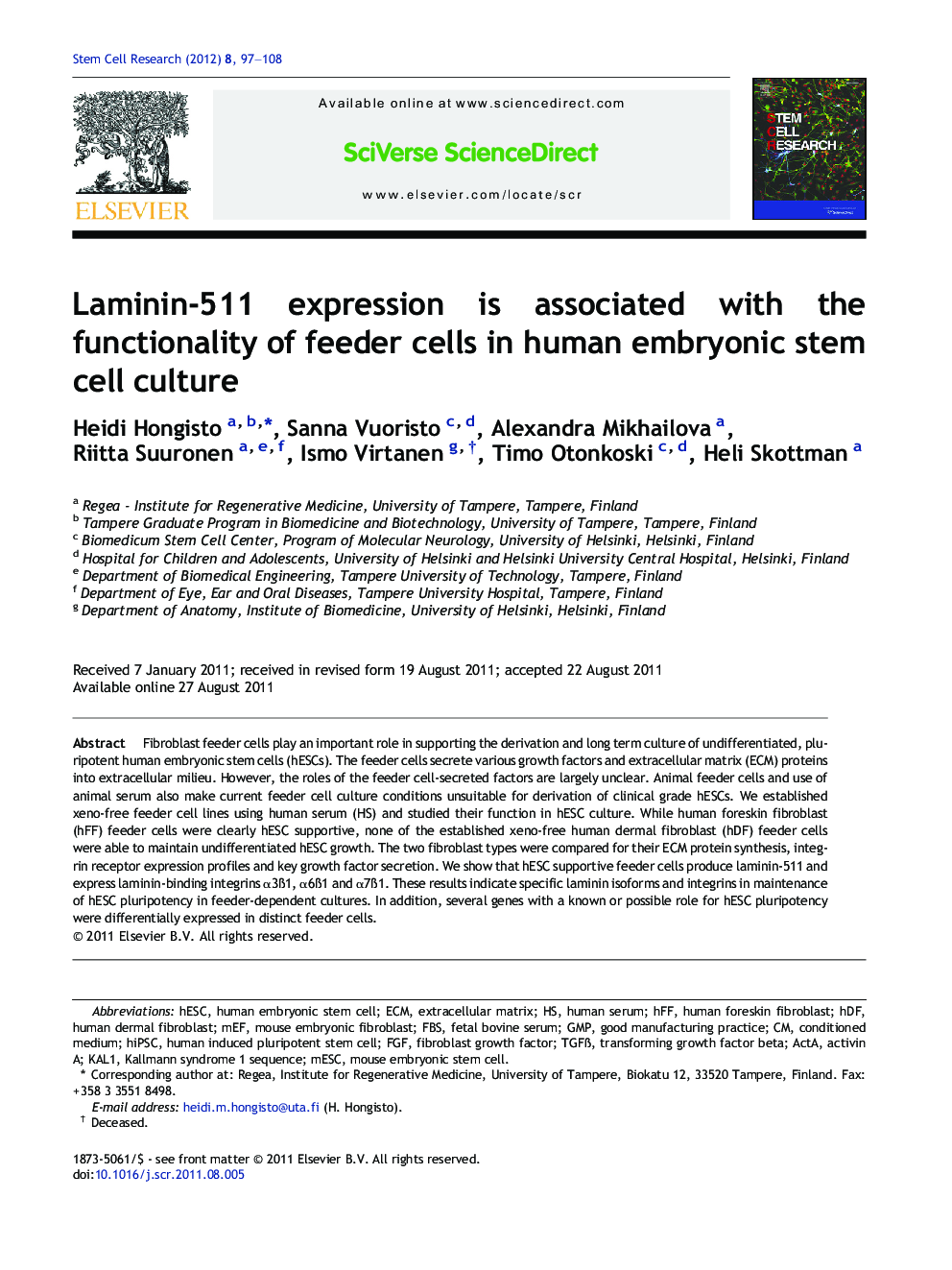| Article ID | Journal | Published Year | Pages | File Type |
|---|---|---|---|---|
| 2094636 | Stem Cell Research | 2012 | 12 Pages |
Fibroblast feeder cells play an important role in supporting the derivation and long term culture of undifferentiated, pluripotent human embryonic stem cells (hESCs). The feeder cells secrete various growth factors and extracellular matrix (ECM) proteins into extracellular milieu. However, the roles of the feeder cell-secreted factors are largely unclear. Animal feeder cells and use of animal serum also make current feeder cell culture conditions unsuitable for derivation of clinical grade hESCs. We established xeno-free feeder cell lines using human serum (HS) and studied their function in hESC culture. While human foreskin fibroblast (hFF) feeder cells were clearly hESC supportive, none of the established xeno-free human dermal fibroblast (hDF) feeder cells were able to maintain undifferentiated hESC growth. The two fibroblast types were compared for their ECM protein synthesis, integrin receptor expression profiles and key growth factor secretion. We show that hESC supportive feeder cells produce laminin-511 and express laminin-binding integrins α3ß1, α6ß1 and α7ß1. These results indicate specific laminin isoforms and integrins in maintenance of hESC pluripotency in feeder-dependent cultures. In addition, several genes with a known or possible role for hESC pluripotency were differentially expressed in distinct feeder cells.
► Human foreskin feeders are clearly hESC-supportive in contrast to dermal cells. ► Several differences in hESC-supportive and non-supportive feeder cells were found. ► hESC-supportive feeders produce laminin-511 and express laminin binding integrins. ► Other possible hESC pluripotency regulators were also differentially expressed.
